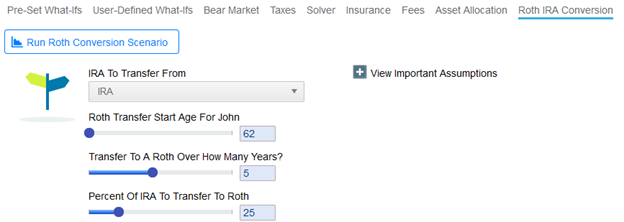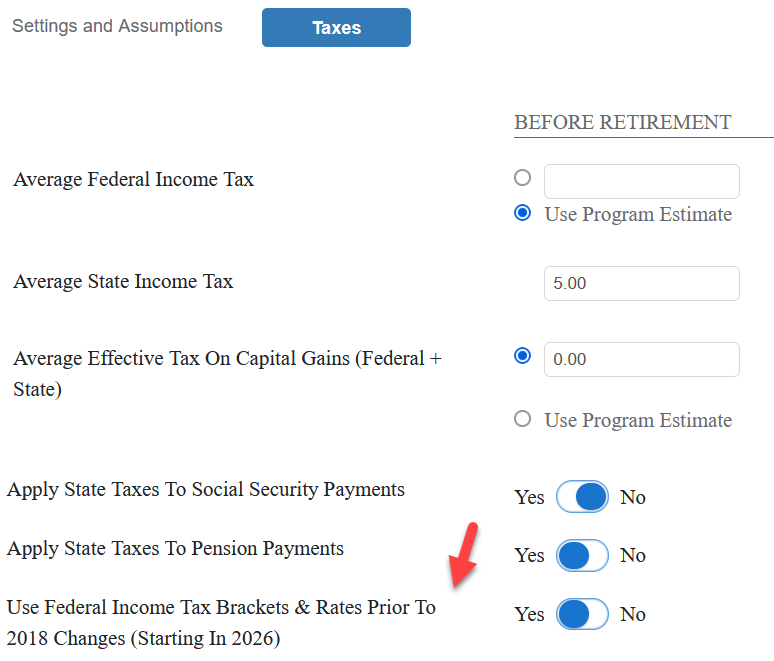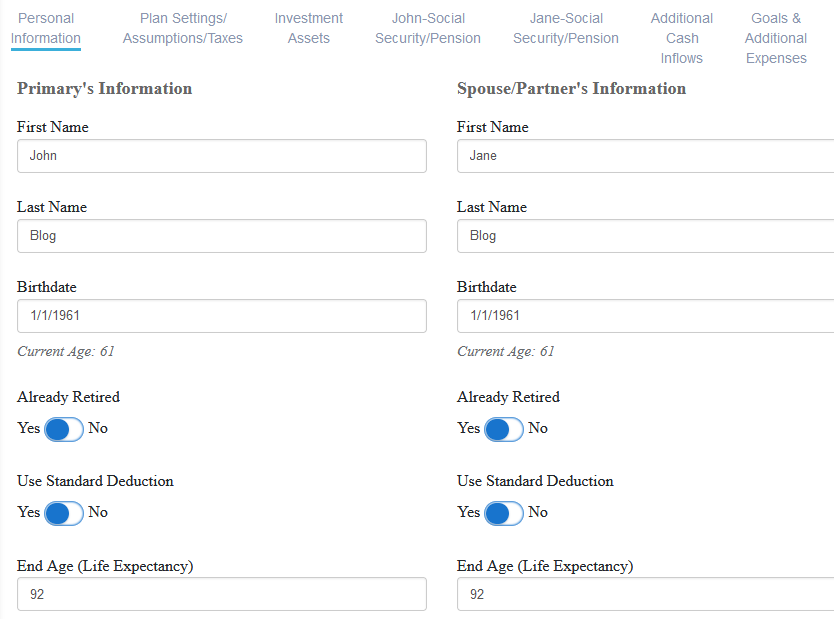Key Points:
- Some investors convert to a traditional IRA to a Roth IRA without understanding whether or not they really should.
- Usually the best time to convert to a Roth IRA is after retiring but before Social Security and Required Minimum Distributions (RMDs) begin.
- Federal income tax rates are still set to increase in 2026 after the tax cuts in 2018. This could have a big impact on whether or not a Roth conversion makes sense.
More people are retiring earlier than expected. The Covid pandemic was one reason a large number of people retired before they thought they would. Many of them have a large 401(k) balance to thank for this. Relatively early retirement combined with a large 401(k) or rollover IRA is opening up more opportunities to save money with a Roth conversion.
The Sweet Spot for Converting to a Roth IRA
The key to getting the most out of a Roth IRA conversion is to do it when your income tax rate is low. If a person stops working before he or she needs Social Security and there is no pension income, this is usually a great time for a Roth conversion because taxable income is so low. This assumes they don’t need large distributions from a 401(k) or traditional IRA in order to pay for expenses. These withdrawals would count toward taxable income and reduce the benefits of a Roth conversion.
Many people are shocked to see that their projected federal income tax rate in retirement is much lower than before they retired. Many times it’s close to 0%!
Let’s look at an example. John is 60 years old and both he and his wife have retired with a total of $2 million in their 401(k) plans. They have very little in their taxable accounts and plan on living off of their combined $45,000 in Social Security and their retirement accounts. They won’t take Social Security until they are both 67 so they have seven years until their income increases. Then at age 72 their RMDs will begin, at which point a Roth conversion definitely would not make sense.
Using the Roth Conversion scenarios feature in the WealthTrace Planner I looked at a scenario where they convert part of their 401(k) plans into a Roth IRA starting today and stopping when their Social Security benefits begin at age 67. It is very unlikely they want to convert the entire $2 million because this would push them into a very high tax bracket during the entire conversion period. So I started by looking at what happens if they convert 25% of the 401(k) plans:

The results show that a Roth conversion makes sense for them:

You can see that they would pay about $26,000 less in taxes over the life of their plan and the amount of money left at the end of their plan would be about $22,000 more. What if they converted half of the balance in the 401(k) plans?

The results get worse for them vs. the first scenario where they converted 25% to a Roth IRA. Although pay even less in taxes in this scenario, the amount they have left at the end of the plan was about $2,300 less than in the first scenario. This is because the large tax payments are very front-loaded when the Roth conversion is done.
After iterating on a few scenarios I found the maximum savings occur when they convert 20% of their 401(k) plans over the seven year period. In this case they will have about $24,000 more at the end of their plan vs. not converting.
Higher Potential Future Tax Rates
If you believe taxes will be higher in the future, a Roth conversion makes even more sense if you can do it when your tax rates are lower and before your income tax rates go up. Federal income tax rates were reduced across the board in 2018, but they were not made permanent and are scheduled to go back to where they were starting in 2026. A tax increase like this will have a large impact on most retirement plans in general. But it also will sway decisions on Roth conversions.
In the WealthTrace Planner you can actually specify that federal income tax rates will go back up in 2026 as you see below:

My theory is that increased future tax rates means a Roth conversion makes even more sense for our sample couple to implement today. To test this I turned on the setting to increase taxes in 2026. I re-ran the scenario where they convert 20% of their 401(k) plans over the five year period.

As expected, the amount at the end of the plan is even greater vs. the base case in this scenario. It is now about $33,000 more vs. $24,000 more when tax rates did not go up in the future. You might also notice that their total amount left at the end of the plan in the base case and the Roth conversion scenario are now less than before. Also, the ‘Probability Of Funding All Goals’ decreased as well vs. the previous scenarios. This is simply due to the reduced federal tax rates expiring in 2026.
Life Expectancy and the Impact on Roth Conversions
One variable that doesn’t get much discussion when talking about Roth conversions is life expectancy. Many people don’t realize that the longer you think you will live, the more a Roth conversion makes sense. The reason is this: when a person who owns a Roth IRA lives longer, the amount in the Roth gets to grow and compound tax-free longer and there are no RMDs forcing the owner to withdraw the money.
Recall that in the scenario where they convert 20% of the 401(k) plans, and tax rates do not change in 2026, they had about $24,000 more left at the end of their plan if the convert to a Roth IRA. Currently their life expectancy is set to 85 years. What if we set it to 92?

After changing the life expectancy assumption and re-running the Roth conversion scenario we see the results below:

Because they live longer they have less money at the end of their plan. But notice how much more is left if they convert to a Roth IRA now. They would have nearly $50,000 more, which is more than double the difference from before. This just shows how important the life expectancy variable is for Roth IRA conversions and for retirement planning in general.
Don’t Wait and do Your Due Diligence
A Roth IRA conversion can save many people thousands of dollars over time. But so many have no idea if they should even make a conversion, and even more difficult, when to do it and how much to convert. But as shown in this article you can really home in on the answer by running several Roth IRA conversion scenarios with different assumptions to find that sweet spot that will save you the most money.
Do you want to see if you should convert to a Roth IRA? Sign up for a free trial of WealthTrace today and start running your Roth conversion scenarios.